- Rent, Lease, or Purchase
- |
March 18, 2022
What Makes Military Shipping Containers Unique?
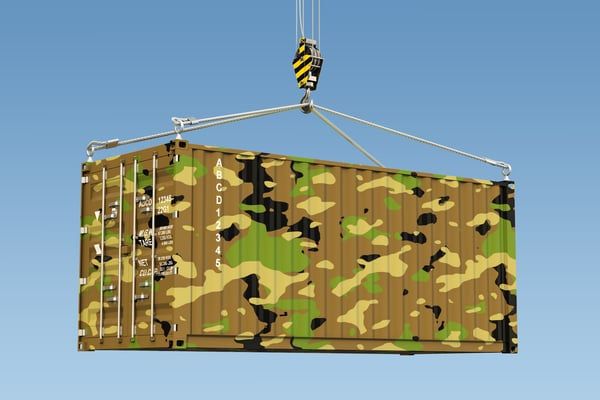
Military shipping containers are special-purpose containers that meet the U.S. military design specifications. Most manufacturers design military shipping containers only under Indefinite Delivery/Indefinite Quantity (IDIQ) contracts. However, civilians can also buy these containers in some cases, as military surplus.
Military containers serve various critical applications, from storage to transit camps and drill boxes. That’s why the design of these cargo containers must meet stringent guidelines and quality checks. Every part of the container has a standardized build, allowing complete uniformity and interchangeability.
Whether you're looking for storage containers, military crates, or containerized housing, you can find units available for rental or sale. Your decision to lease or purchase a container depends on your application, how long you’ll need the container, and where you’re located.
Below, we’ll explore military design criteria, unique container features, container types, and the different applications they serve. By the time you finish reading this guide, you’ll know exactly how to locate the right container for your needs.
What are U.S. Military Container Specifications (MILSPEC)?
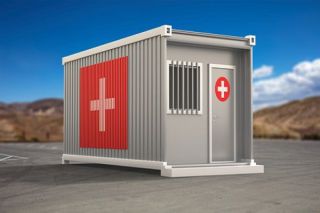
The U.S. Military maintains container specifications (MILSPEC) to ensure standardized built quality. Each military storage box that the army, navy, or air force buys and uses follows MILSPEC. Military storage containers remain uniform even if their manufacturing year or manufacturer is different.
MILSPEC is similar to the ISO standards, albeit with slight variations. You can find the following container types and their standard dimensions in MILSPEC:
- Storage/Cargo Containers
- Container Housing Shelters
- Bicon, Tricon, and Quadon - Equipment Deployment Storage System (EDSS)
- Flat racks
- Internal Airlift/Helicopter Slingable Unit (ISU)
- Pallet Containers
- Reefers
- Half-height Containers
- Open-top Containers
- Side-opening Containers
- Tank Container
Types of Military Shipping Containers
Unlike commercial industries that primarily use 40-foot ISO-standard containers, the U.S. military prefers 20-foot containers. Just about half of the shipping containers used by the military are 20' units. The armed forces specify container measurements in 'Twenty-Foot Equivalent (TEU)' equivalent to one 20-foot cargo container.
The measurements and applications of the various container types are as follows.
Storage Containers
20-foot and 40-foot ISO containers function as efficient storage boxes, helping store training gear, food, ration, and other military consumables. Besides standard containers, the military also uses high cubes and half-height containers for storing specific items. We've listed the dimensions below.

Housing Containers
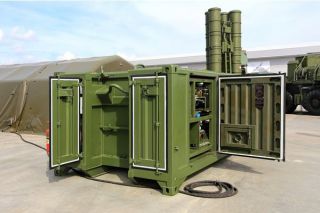
Shipping containers can also help build high-quality shelters, barracks, temporary and long-term residences. Most importantly, housing units function as outposts and bases during overseas troop deployment. Since containers are highly portable, the military can install and remove these houses as needed.
You can find the following features in military shipping container housing shelters:
- Doors
- Windows
- Electric and plumbing utilities
- Insulation
- Hardwood flooring
- Heating and Air-conditioning units
- Racks and shelves
Bicon, Tricon, and Quadcon
While standard containers exist as single units, Equipment Deployment Storage System (EDSS) containers come in multiple smaller units. You can break these shipping containers into smaller sections or exchange the units for quick deployment, faster deliveries, and more efficient goods management.
EDSS containers come in three variants:
Bicon (2 Partitions in 1 TEU)
Bicons have two connecting units of about 9'9" length which occupy the same amount of space as a 20' shipping container. Their design may include side doors, a single door, or double doors.
Tricon (3 Partitions in 1 TEU)
Tricons have three connected sections, each measuring 6'3." These sections together can also function as a single 20' shipping container. They come in various configurations such as multi-side loading, two ends and one side loading, etc.
Quadcon (4 Partitions in 1 TEU)
Quadcons are the shortest of all deployment systems. Their design consists of four sections, each 4'9" long. Like bicons and tricons, their designs vary based on the loading conditions and configurations. You can find single-door, multi-door, and side-loading quadcons.
Ammo-Grade Shipping Containers
The Institute of International Container Lessors (IICL) specifies the permissibility criteria for used containers. Since they adhere to stringent rules, IICL containers are maintained in excellent structural condition.
Ammo-grade containers even exceed the IICL requirements. Ammunition storage boxes can store explosives, detonators, ammunition, fireworks, and other hazardous materials.
Military ammunition boxes meet the UN Hazard Class 1 - International Maritime Dangerous Goods (IMDG) standards. In addition to their exceptional durability and strength, they have safety doors, vents, and stainless steel valves for added protection.
Flat Racks and Open-Tops
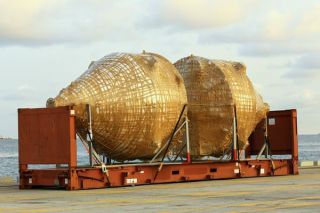
Flat rack containers, also known as flat tracks, help transport irregular-shaped cargo that cannot fit in standard cargo containers. Vehicles, heavy machinery, artillery ammunition parts are some of the goods that use flat racks.
A flat rack shipping container may also have collapsible doors on either end, helping you load and unload goods more efficiently. If the flat rack has fixed doors, you can use a crane or ramp to load the goods.
Open-top containers also allow you to load cargo from the top. However, they have fixed walls at all sides and a removable roof. Like flat rack shipping containers, open-top containers help handle heavy and difficult-to-load items.
ISU Cargo Containers
An Internal Airlift/Helicopter Slingable Unit (ISU) cargo container helps transport cargo on pallets. These containers are smaller than half-height containers, allowing you to ship them on aircraft and larger shipping containers. Though they are small in size, they come equipped with shelving, drawers, insulation, air-cooling, and other valuable features.
ISU containers come in three categories with standard sizes as follows:
- ISU 60: 9' L x 7.3' W x 5' H
- ISU 90: 9' L x 7.3' W x 7.6' H
- ISU 96: 9' L x 7.3' W x 8' H
The number following ISU represents the container height in inches. For instance, ISU 60 means that the container's height is 60 inches, or five feet. Most of these shipping containers have a lightweight aluminum body and slanted sides that allow for effortless loading in aircraft.
ISU 96 is a refrigerated unit that requires electric or diesel power. In addition to the refrigerated area, these containers offer about another 260 cubic foot storage capacity.
Reefer Containers
Government agencies and the U.S. Armed Forces use refrigerated containers or reefers to transport perishable materials like vegetables, meat, and medicinal supplies. You can also find reefers with separate refrigerated zones and freezers. Reefer containers run on electricity or diesel generator sets and maintain temperatures in the -25 F to +125 F range.
Tank Containers
Cargo container tanks or tank containers help transport liquids, gasses, powdered ammunition, and more. Some tank units have a unique food-grade build that allows you to safely move grains, fruits, and other food items.
Tanks have a unique rating system that helps identify what you can fill or transport. For example, ISO T50 tanks have a safe LPG and ammonia gasses rating. Here's a list of some standard tank containers and their applications:
- ISO T1 - Wine and light liquids
- ISO T5- Non-hazardous oils
- ISO T11 - Non-hazardous chemicals
- ISO T14 - Hazardous chemicals
Pallet Containers (PALCON)
PALCONs have an in-built pallet flooring that allows you to move and stack them with forklifts. Many palletized units also have airlift rings for crane and helicopter lifts. The most significant feature of a pallet shipping container is its fiberglass construction, making it much lighter than corrugated steel. A typical PALCON measures 4' x 3.3' x 3.9.'
Buying Vs. Renting Military Shipping Containers
You can find most containers available for rent or sale. Deciding which option to go with depends on your location, application, and usage duration. Here are some factors that can help you decide between buying and renting:
Cost
The price of a used/repurposed 20' shipping container ranges from $1,500 to $2,000, while new 20-foot containers or one-trips cost about $3,000-$3,500. Average rental prices hover around $100-$200 a month. A two-year rental period will cost about the same as purchasing your own container, which is why buying is a better option for long-term needs. Rentals are best for short-term projects.
Customizations
You cannot make any modifications to a rental container. Alternatively, if you own a shipping container, you can create as many customizations as you want. You change the layout to add doors, windows, and other accessories as per your requirement.
Maintenance
A rental company generally takes care of the repair and maintenance of their container fleet. When you buy a container, you'll have to invest some time and effort in regular maintenance such as painting, repairing dents, etc.
Pro tip: Container pricing does not include the delivery charges. Depending on your location, delivery equipment/mode, and container size, your container supplier will levy additional delivery expenses. Be sure to read your contract terms and discuss these charges before moving forward with your investment.
Applications of Modified Shipping Containers in Military Applications
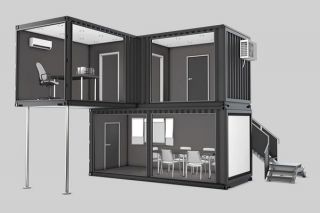
Military cargo containers offer a secure, high-strength, and weather-proof structure, making them a great resource for a variety of applications. Use cases are as follows:
- Storage: Modified shipping containers help store and maintain an inventory of military essentials.
- Housing and Offices: A shipping container's modular structure makes it easy to create highly functional homes and offices with ventilation, air-conditioning, and electricity.
- Barracks: Conex boxes serve as army barracks during remote and overseas operations.
- Military Operations in Urban Terrain (MOUT) Training Unit: Shipping containers can help replicate urban structures and rural housing to build efficient training facilities.
- Improvised Explosive Device (IED) Training Lanes: A shipping container has a solid Corten steel body, making them ideal for building IED training lanes. These lanes can help train the troops to take cover, perform stealth operations, etc.
- After Action Review (AAR) Buildings: AAR units are where the armed forces conduct post-operation planning and strategy building. A container's easy-to-modify design can help create an air-conditioned space with whiteboards and models to create a classroom-like ambiance.
Shipping container structures can be deployed quickly and function as emergency medicine units. Mess command camps, toilets, and laundry areas
Best Government Suppliers
Depending on their requirements and container types, the government enters into various tie-ups with container supplies. While there are plenty of government suppliers, these are some of the most popular options:
Sea Box
Sea Box offers a full range of standard and custom containers to the U.S. government. They have IDIQ contracts with the government for over 25 years to supply shelters, freight boxes, housing, reefers, and custom buildings. You can also find containers for sale and rent in various conditions for civilians and private companies.
NexGen
With its headquarters in North Carolina, NexGen offers military housing and shelter containers across the U.S. They also build custom buildings, expandable storage units, and EDSS containers.
W & K
Founded in 1995, W & K has grown into one of the largest military container manufacturers in the country. They also buy back and repurpose shipping containers for third-party use. Their specialty includes bicons, tricons, quadcons, reefers, flat racks, and ISO containers.
How Can Mobile Modular Portable Storage (MMPS) Help?
MMPS is one of the largest suppliers of high-quality, ISO standard containers for sale and rent. We provide shipping containers that have passed stringent quality checks and meet all necessary safety standards. Our services include storage container units, container offices, and office-storage combo containers.
Unlike the 28-day billing cycle prevalent in the industry, we offer a 30-day rental plan that allows you to use our units for two extra days at no additional cost. Once you place a request, we will connect you with a dedicated container specialist to assist you throughout the entire process and ensure hassle-free delivery.
We also have our own fleet of vehicles that deliver to all the major states across the U.S. Call us today at 866-691-6474 or request a quote to learn more about our pricing, customizations, and delivery options.
Conclusion
Modified shipping containers serve many critical military applications. Their high strength, portability, and ease of customization make them perfect for storage, housing, training facilities, data centers, and commercial buildings.
Frequently Asked Questions
How Much Does It Cost to Buy an Old 40 Ft. Shipping Container?
Old 40-foot shipping containers cost anywhere from $3,000-$7,000. The container's price may vary according to its condition, years of services, demand, availability, and modifications.
What Is an IDIQ contract?
IDIQ stands for Indefinite Delivery/Indefinite Quantity. It means that a supplier will provide as many goods/services as the client needs during a fixed time.
What Is Tare Weight?
Tare weight refers to the weight of empty containers, while gross weight is the container's weight after loading. Measuring tare weight before loading helps determine the container's weight capacity. Net weight of cargo = Gross weight - Tare weight.
Related Blogs
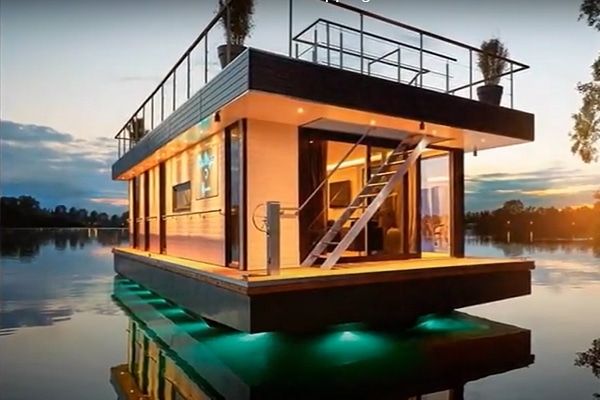
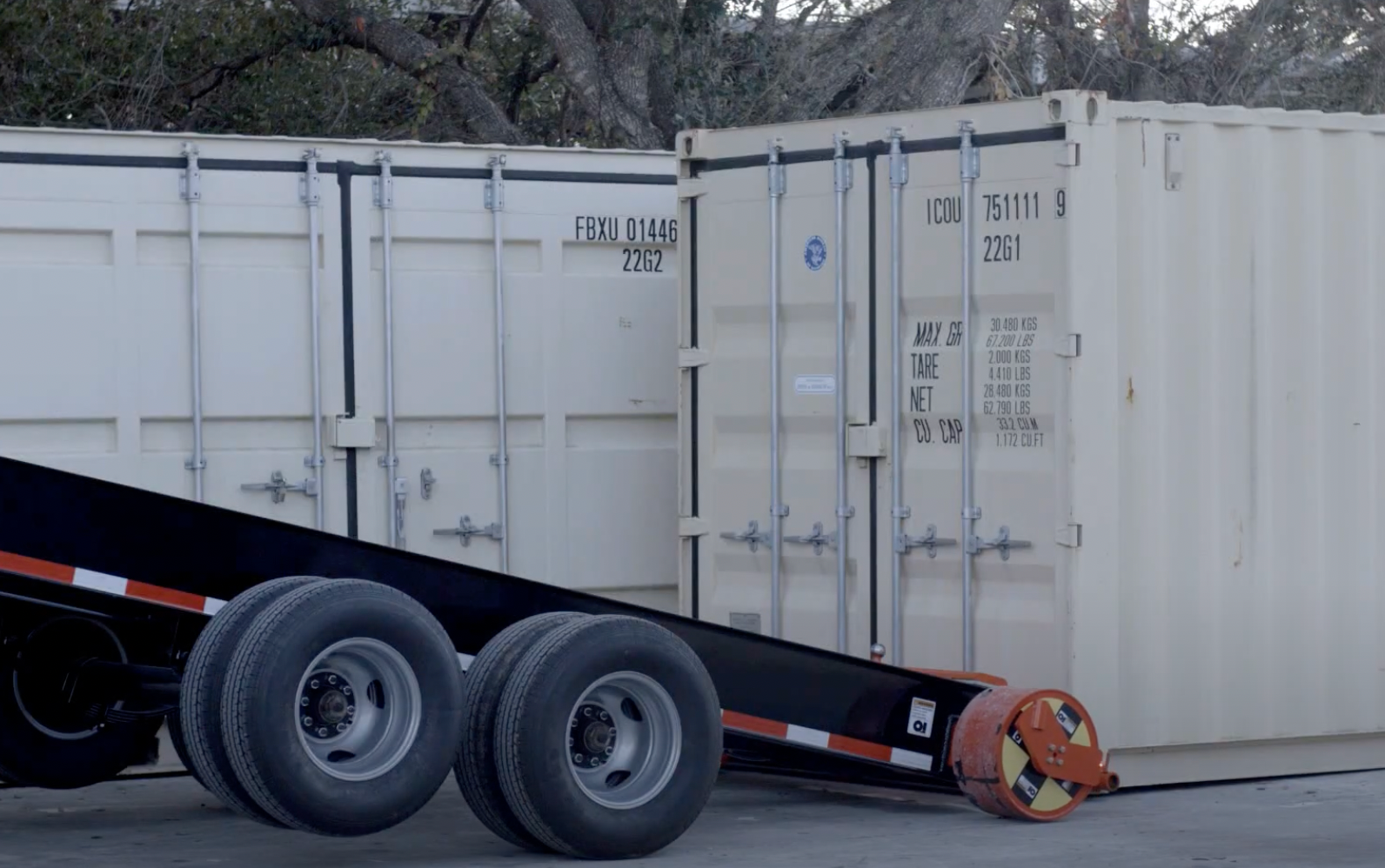
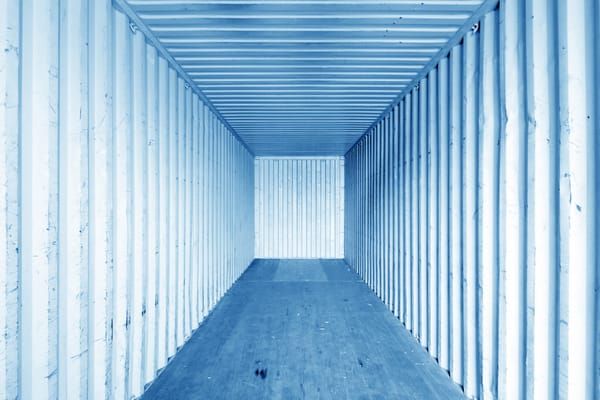
Subscribe to Our Blog
Enter your email address to subscribe to the blog and receive the notification of new posts by email.
Thank You for Subscribing to Our Blog!
Stay tuned for upcoming emails with valuable content that we hope will enhance your experience with our brand.
Both Pardot and mg360 form submissions failed.
